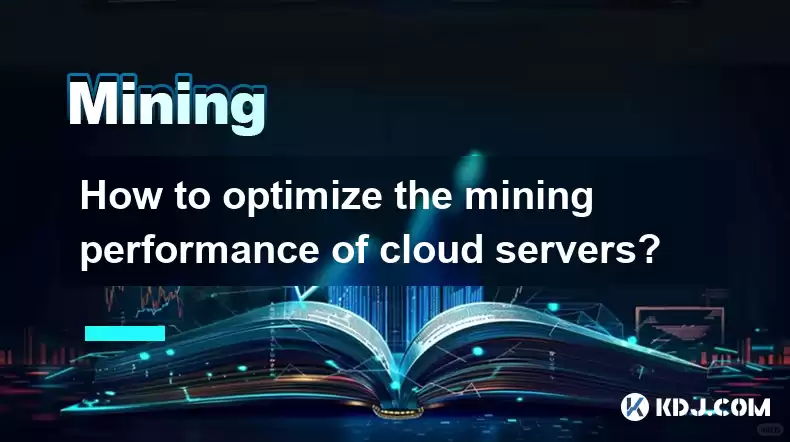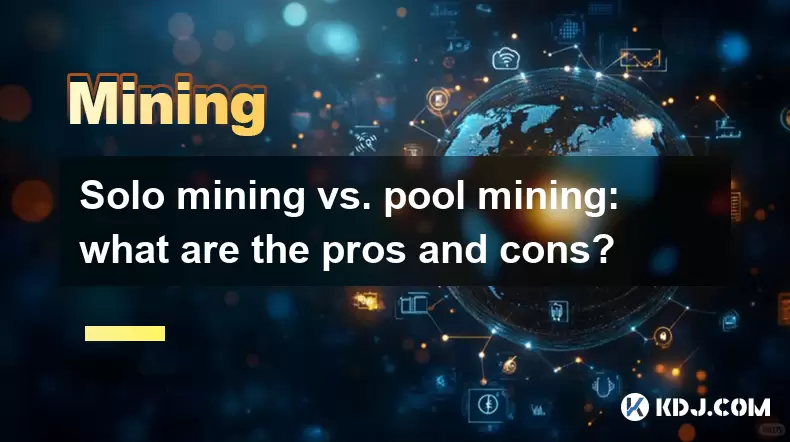-
 Bitcoin
Bitcoin $114200
0.00% -
 Ethereum
Ethereum $3637
0.56% -
 XRP
XRP $2.950
-2.01% -
 Tether USDt
Tether USDt $0.9999
0.02% -
 BNB
BNB $761.0
0.55% -
 Solana
Solana $164.1
-1.38% -
 USDC
USDC $0.9999
0.02% -
 TRON
TRON $0.3332
0.36% -
 Dogecoin
Dogecoin $0.2012
-0.52% -
 Cardano
Cardano $0.7261
-1.41% -
 Hyperliquid
Hyperliquid $37.62
-2.13% -
 Stellar
Stellar $0.3930
-2.65% -
 Sui
Sui $3.441
-0.16% -
 Bitcoin Cash
Bitcoin Cash $563.8
0.70% -
 Chainlink
Chainlink $16.50
0.09% -
 Hedera
Hedera $0.2424
-0.14% -
 Ethena USDe
Ethena USDe $1.001
0.01% -
 Avalanche
Avalanche $22.20
0.00% -
 Litecoin
Litecoin $118.0
-2.48% -
 UNUS SED LEO
UNUS SED LEO $8.991
0.12% -
 Toncoin
Toncoin $3.195
-3.87% -
 Shiba Inu
Shiba Inu $0.00001217
0.12% -
 Uniswap
Uniswap $9.674
-0.21% -
 Polkadot
Polkadot $3.633
1.00% -
 Monero
Monero $295.3
-0.82% -
 Dai
Dai $0.9999
0.00% -
 Bitget Token
Bitget Token $4.321
-0.41% -
 Cronos
Cronos $0.1392
0.73% -
 Pepe
Pepe $0.00001027
-0.89% -
 Aave
Aave $258.5
0.32%
How to optimize the mining performance of cloud servers?
Optimal cloud mining demands careful instance selection (CPU, GPU, RAM, bandwidth), OS optimization, robust network connectivity, consistent monitoring, and strategic pool choice for maximized efficiency and profitability.
Mar 25, 2025 at 09:21 pm

Key Points:
- Choosing the right cloud provider and instance type is crucial for optimal mining performance. Factors like CPU, GPU, memory, and network bandwidth significantly impact hash rate.
- Efficient operating system configuration and software optimization are vital. This includes minimizing background processes and using specialized mining software.
- Network connectivity is paramount. High bandwidth, low latency connections are essential for efficient block propagation and transaction submission.
- Regular monitoring and maintenance are key to identifying and addressing performance bottlenecks. This includes checking hardware utilization, temperature, and network stability.
- Understanding and optimizing the mining pool selection process can also improve profitability and efficiency.
How to Optimize the Mining Performance of Cloud Servers?
Cloud mining offers accessibility and scalability, but optimizing performance requires careful planning and execution. Let's delve into the critical aspects.
1. Selecting the Right Cloud Provider and Instance Type:
Choosing the right cloud provider is fundamental. Consider factors such as pricing, geographic location (closer to your chosen mining pool reduces latency), and the availability of specialized hardware. Some providers offer instances optimized for high-performance computing, ideal for cryptocurrency mining. Carefully examine the specifications of each instance type, focusing on CPU, GPU (if applicable), RAM, and network bandwidth. A powerful GPU is essential for GPU-based mining algorithms, while high CPU cores are beneficial for CPU-based algorithms. Sufficient RAM is crucial to prevent performance bottlenecks. High bandwidth ensures efficient data transfer to and from the mining pool.
2. Optimizing the Operating System and Software:
Once you've chosen your instance, optimize the operating system. Minimize background processes to free up resources for mining. Ensure the operating system is up-to-date with the latest security patches. Install and configure the appropriate mining software for your chosen cryptocurrency and algorithm. Many specialized mining programs offer advanced configuration options to fine-tune performance. Experiment with different settings to find the optimal balance between hash rate and power consumption. Consider using a lightweight OS designed for server environments to further reduce overhead.
3. Ensuring Optimal Network Connectivity:
Network latency and bandwidth directly impact mining performance. A high-bandwidth, low-latency connection is crucial for rapid block propagation and transaction submission. Consider using a dedicated IP address to avoid network congestion and ensure consistent connectivity. Monitor network performance regularly to identify and resolve any connectivity issues promptly. Consider the geographic proximity of the cloud server to the mining pool servers; closer proximity reduces latency.
4. Regular Monitoring and Maintenance:
Continuous monitoring is vital for maintaining optimal performance. Use monitoring tools to track key metrics such as hash rate, temperature, power consumption, and network usage. High temperatures can significantly reduce performance and potentially damage hardware. Regularly check for software updates and apply them promptly. Address any performance bottlenecks identified during monitoring. Proactive maintenance prevents unexpected downtime and performance degradation. Consider automated monitoring systems to receive alerts about potential problems.
5. Choosing the Right Mining Pool:
The choice of mining pool influences profitability and efficiency. Select a pool with a stable connection, low fees, and a good payout system. Consider the pool's hash rate; larger pools generally offer more consistent payouts. A pool's geographical location can impact latency, so choosing a pool closer to your server can improve performance. Analyze the pool's payment system and fee structure to optimize your returns. Regularly monitor the pool's performance and consider switching if necessary.
6. Hardware Acceleration (If Applicable):
If your chosen cryptocurrency algorithm supports hardware acceleration (e.g., using GPUs), ensure that your cloud instance has the necessary hardware and that the mining software is properly configured to utilize it. Proper driver installation and configuration are critical. Monitor GPU temperature and utilization to prevent overheating and maintain peak performance.
7. Power Management:
Cloud providers offer various power management options. Optimize these settings to balance performance and cost-effectiveness. Choose a power profile that provides sufficient power for mining without unnecessary overhead.
Frequently Asked Questions:
Q: What are the best cloud providers for cryptocurrency mining?
A: Several providers offer suitable infrastructure, including AWS, Google Cloud, and Azure. The optimal choice depends on your specific needs, budget, and location. Each provider offers different instance types and pricing models.
Q: How do I choose the right instance type for my mining needs?
A: Consider the algorithm you're mining and its hardware requirements. GPU-based algorithms need powerful GPUs, while CPU-based algorithms prioritize CPU cores. High RAM is always beneficial, and sufficient network bandwidth is crucial for all algorithms.
Q: What mining software is recommended for cloud servers?
A: Popular options include NiceHash Miner, Claymore's Dual Ethereum Miner, and others tailored to specific cryptocurrencies. The best choice depends on your specific needs and the cryptocurrency you're mining. Always research the reputation and security of any mining software before use.
Q: How can I monitor my cloud mining performance effectively?
A: Use built-in cloud monitoring tools or third-party solutions to track key metrics such as hash rate, temperature, power consumption, and network utilization. Many mining software packages offer integrated monitoring features.
Q: What are the potential risks of cloud mining?
A: Risks include provider outages, unexpected cost increases, security vulnerabilities, and potential scams. Thoroughly research providers and software before investing.
Disclaimer:info@kdj.com
The information provided is not trading advice. kdj.com does not assume any responsibility for any investments made based on the information provided in this article. Cryptocurrencies are highly volatile and it is highly recommended that you invest with caution after thorough research!
If you believe that the content used on this website infringes your copyright, please contact us immediately (info@kdj.com) and we will delete it promptly.
- Ethereum, Transaction Volumes, and SEC Staking: Navigating the Regulatory Landscape
- 2025-08-06 22:30:13
- Crypto, Tokens, and Metrics: Navigating the New Frontier
- 2025-08-06 23:09:22
- Crypto Market Buzz: PROVE Surges as Coinbase, Binance List Token
- 2025-08-06 22:30:13
- BlockSack Who? Base Network and Layer 2s Shake Up the Crypto Scene
- 2025-08-06 23:10:13
- Brazil, Bitcoin, Hearing Date: Is Brazil About to Embrace Bitcoin?
- 2025-08-06 20:30:38
- Stabull DEX on Base Chain: A New Era for Stablecoins?
- 2025-08-06 20:47:53
Related knowledge

What are the differences between mining on Windows vs. Linux?
Aug 06,2025 at 11:29pm
Overview of Cryptocurrency Mining PlatformsCryptocurrency mining involves using computational power to solve complex cryptographic puzzles and validat...

How to build a mining rig inside a PC case?
Aug 06,2025 at 11:01pm
Understanding the Basics of a Mining Rig in a PC CaseBuilding a mining rig inside a PC case involves transforming a standard computer chassis into a d...

How to use a server PSU for a crypto mining rig?
Aug 06,2025 at 08:39pm
Understanding Server PSUs and Their Relevance to Crypto MiningCrypto mining rigs demand stable, high-wattage power supplies to run multiple GPUs effic...

Solo mining vs. pool mining: what are the pros and cons?
Aug 06,2025 at 08:15pm
Understanding Solo Mining in CryptocurrencySolo mining refers to the process where an individual miner attempts to solve a block on their own without ...

What was the highest APY for IRON mining?
Jul 23,2025 at 05:14am
Understanding IRON Token and Its Mining MechanismThe IRON token is a stablecoin that operates within the Iron Finance ecosystem, primarily on blockcha...

What is impermanent loss in IRON pools?
Jul 23,2025 at 09:00am
Understanding Impermanent Loss in the Context of IRON PoolsImpermanent loss is a phenomenon that affects liquidity providers in decentralized finance ...

What are the differences between mining on Windows vs. Linux?
Aug 06,2025 at 11:29pm
Overview of Cryptocurrency Mining PlatformsCryptocurrency mining involves using computational power to solve complex cryptographic puzzles and validat...

How to build a mining rig inside a PC case?
Aug 06,2025 at 11:01pm
Understanding the Basics of a Mining Rig in a PC CaseBuilding a mining rig inside a PC case involves transforming a standard computer chassis into a d...

How to use a server PSU for a crypto mining rig?
Aug 06,2025 at 08:39pm
Understanding Server PSUs and Their Relevance to Crypto MiningCrypto mining rigs demand stable, high-wattage power supplies to run multiple GPUs effic...

Solo mining vs. pool mining: what are the pros and cons?
Aug 06,2025 at 08:15pm
Understanding Solo Mining in CryptocurrencySolo mining refers to the process where an individual miner attempts to solve a block on their own without ...

What was the highest APY for IRON mining?
Jul 23,2025 at 05:14am
Understanding IRON Token and Its Mining MechanismThe IRON token is a stablecoin that operates within the Iron Finance ecosystem, primarily on blockcha...

What is impermanent loss in IRON pools?
Jul 23,2025 at 09:00am
Understanding Impermanent Loss in the Context of IRON PoolsImpermanent loss is a phenomenon that affects liquidity providers in decentralized finance ...
See all articles

























































































